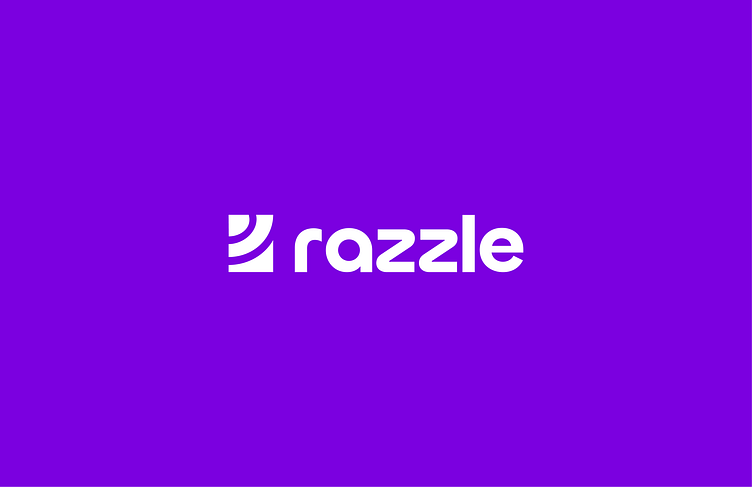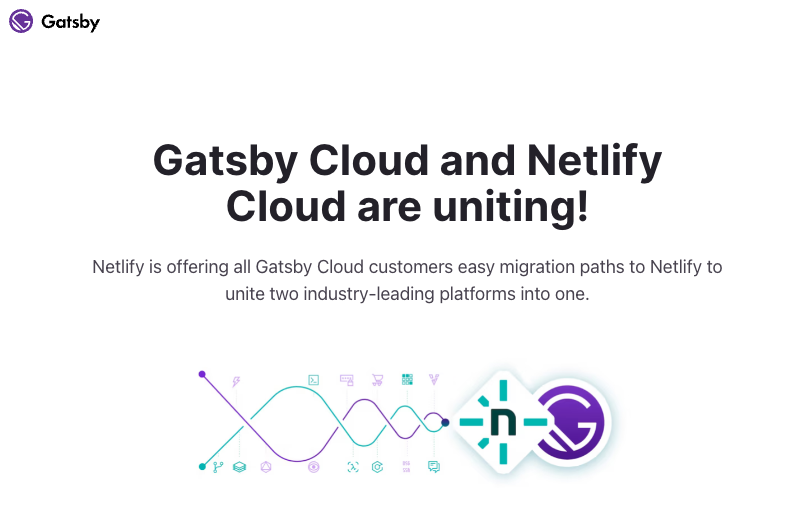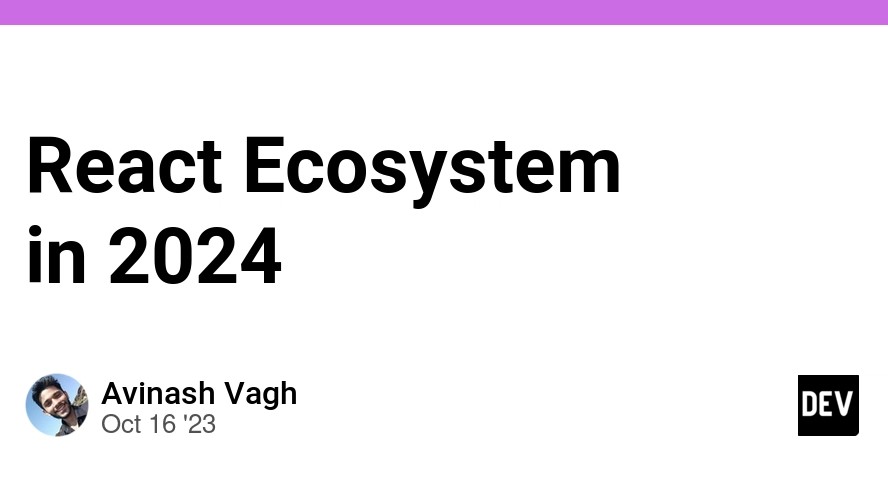In the ever-evolving landscape of web development, the React ecosystem is dominated by powerful, opinionated frameworks. The latest Next.js News and Remix News highlight a trend towards integrated, full-stack solutions that simplify server-side rendering (SSR), routing, and data fetching. While these frameworks offer incredible developer experience and performance, they often come with a prescribed way of doing things. But what happens when your project demands more flexibility? What if you need to integrate with a legacy server, use a specific routing library, or have complete control over your build process? This is where Razzle enters the conversation.
Razzle is a powerful tool that abstracts away the complex configuration of building universal JavaScript applications, without making assumptions about your project’s architecture. It provides a seamless development experience for server-rendered apps but leaves the choices of framework, router, and data-fetching library entirely up to you. This article serves as a comprehensive guide to Razzle, exploring its core philosophy, practical implementation with modern libraries, advanced techniques, and its relevant place in today’s React news cycle. We will dive into code examples, best practices, and see how it empowers developers to build sophisticated, high-performance applications with unparalleled control.
Understanding Razzle’s Core Philosophy: Unopinionated SSR
At its heart, Razzle is designed to solve one of the most challenging aspects of modern web development: configuring a project to run the same code on both the server and the client. This “universal” or “isomorphic” approach is crucial for performance and SEO, but setting up webpack, Babel, and server-side hot-reloading manually can be a daunting task. Razzle handles this complexity under the hood, presenting you with a clean and simple starting point.
What is Razzle and Why Does it Matter?
Unlike frameworks such as Gatsby News or Next.js, which dictate file-system based routing and specific data-fetching methods, Razzle is fundamentally unopinionated. When you create a Razzle project, you get two primary entry points: src/client.js and src/server.js. That’s it. From there, you are free to build your application as you see fit. This flexibility is Razzle’s superpower.
This approach is ideal for several scenarios:
- Integrating with Existing Backends: You can easily incorporate Razzle into an existing Express, Koa, or Fastify server.
- Custom Architecture: You have the freedom to choose any library for routing, state management, or data fetching. You can use React Router News for routing, and for state management, you have a wide array of choices from Redux News and MobX News to modern alternatives like Zustand News, Recoil News, or Jotai News.
- Learning and Prototyping: By exposing the server and client logic directly, Razzle is an excellent tool for understanding the mechanics of server-side rendering.
Getting Started: Your First Razzle Application
Creating a new Razzle project is straightforward. You can use the official create-razzle-app package to bootstrap a new application. Once initialized, you’ll find a minimal structure. The server entry point, src/server.js, is where you’ll configure your server (typically Express) to handle incoming requests, render your React application to a string, and send it back as HTML.
Here is a simplified example of what a basic server.js file looks like. It sets up an Express server, imports the root React component, and uses ReactDOMServer.renderToString to perform the server-side render for every request.
import React from 'react';
import express from 'express';
import { renderToString } from 'react-dom/server';
import App from './App';
const assets = require(process.env.RAZZLE_ASSETS_MANIFEST);
const server = express();
server
.disable('x-powered-by')
.use(express.static(process.env.RAZZLE_PUBLIC_DIR))
.get('/*', (req, res) => {
const markup = renderToString(<App />);
res.status(200).send(
`<!doctype html>
<html lang="">
<head>
<meta http-equiv="X-UA-Compatible" content="IE=edge" />
<meta charset="utf-8" />
<title>Welcome to Razzle</title>
<meta name="viewport" content="width=device-width, initial-scale=1">
${
assets.client.css
? `<link rel="stylesheet" href="${assets.client.css}">`
: ''
}
</head>
<body>
<div id="root">${markup}</div>
${
process.env.NODE_ENV === 'production'
? `<script src="${assets.client.js}" defer></script>`
: `<script src="${assets.client.js}" defer crossorigin></script>`
}
</body>
</html>`
);
});
export default server;Practical Implementation: Building a Dynamic Razzle App
A static render is a good start, but real-world applications require dynamic routing and state management. Razzle’s unopinionated nature means you need to wire these up yourself, but it also means you can choose the best tools for your specific needs. This section explores how to integrate some of the most popular libraries in the React ecosystem.

Adding Routing with React Router
React Router News remains the most popular client-side routing solution for React. To make it work in a universal Razzle app, you need to use two different routers: BrowserRouter on the client and StaticRouter on the server. The server needs StaticRouter because it handles a single, “static” request at a time, without a browser history to manipulate.
In your server.js, you wrap your <App /> component in StaticRouter, passing the request URL so the router knows which route to render. This ensures the correct components are rendered on the server based on the user’s request.
// In your src/server.js
import { StaticRouter } from 'react-router-dom/server';
// ... inside the .get('/*', ...) handler
server.get('/*', (req, res) => {
const context = {};
const markup = renderToString(
<StaticRouter location={req.url} context={context}>
<App />
</StaticRouter>
);
// ... rest of the server logic
});
// In your src/client.js
import { BrowserRouter } from 'react-router-dom';
hydrateRoot(
document.getElementById('root'),
<BrowserRouter>
<App />
</BrowserRouter>
);This setup allows React Router to handle navigation seamlessly. The server renders the initial route, and once the client-side JavaScript loads, BrowserRouter takes over, enabling client-side transitions without full page reloads. This pattern is fundamental to building any non-trivial SSR application.
Managing State Across Server and Client
One of the key challenges in SSR is state hydration. If you fetch data on the server to render a page, the client-side React application needs to know about that data to avoid re-fetching it and to prevent a “flicker” where the server-rendered content is briefly replaced. The solution is to fetch data on the server, serialize the state, embed it in the HTML response, and then use that initial state to “hydrate” the client-side state management store.
While this is a classic use case for Redux News, modern, lightweight libraries like Zustand News offer a much simpler API. Let’s see how you could implement this pattern with Zustand. The key is to create a new store instance for every server request to avoid sharing state between users.
// 1. Define your store (e.g., src/store.js)
import { create } from 'zustand';
export const initializeStore = (preloadedState = {}) => {
return create((set) => ({
...preloadedState,
// ... your store logic
user: { name: 'Guest' },
fetchUser: async () => {
const res = await fetch('/api/user');
const user = await res.json();
set({ user });
},
}));
};
// 2. In your src/server.js
// ...
server.get('/*', async (req, res) => {
const store = initializeStore();
// Simulate a server-side data fetch
await store.getState().fetchUser();
const preloadedState = store.getState();
const markup = renderToString(<App store={store} />);
res.status(200).send(
`<!doctype html>
...
<body>
<div id="root">${markup}</div>
<script>
window.__PRELOADED_STATE__ = ${JSON.stringify(preloadedState).replace(/
...
</body>
</html>`
);
});
// 3. In your src/client.js
const store = initializeStore(window.__PRELOADED_STATE__);
delete window.__PRELOADED_STATE__;
hydrateRoot(
document.getElementById('root'),
<App store={store} />
);This pattern ensures that the client starts with the exact same state the server used to render the initial HTML, providing a smooth and efficient user experience. This same principle applies whether you’re using Zustand, Redux, or other state managers like Recoil News.
Advanced Techniques and Modern Integrations
With routing and state management in place, you can start exploring more advanced patterns. Modern applications rely heavily on sophisticated data fetching, custom build configurations, and robust testing strategies. Razzle’s flexibility shines in these areas, allowing you to integrate cutting-edge tools.
Data Fetching with React Query
For complex data-fetching requirements, libraries like React Query News (now TanStack Query) and Apollo Client News have become industry standards. They provide caching, deduplication, and background refetching out of the box. Integrating React Query in a Razzle app follows a similar hydration pattern to state management.
On the server, you create a new QueryClient for each request, prefetch the necessary data for the requested route, and then dehydrate the cache. This dehydrated state is passed to the client, which then hydrates its own QueryClient. This prevents the client from immediately re-fetching data that the server already retrieved.

// In src/server.js
import { QueryClient, QueryClientProvider, dehydrate } from '@tanstack/react-query';
import { renderToString } from 'react-dom/server';
server.get('/*', async (req, res) => {
// Create a new QueryClient for each request
const queryClient = new QueryClient();
// Prefetch a query. In a real app, you'd determine which queries to run
// based on the requested route.
await queryClient.prefetchQuery(['posts'], fetchPosts);
const markup = renderToString(
<QueryClientProvider client={queryClient}>
<App />
</QueryClientProvider>
);
// Dehydrate the query cache
const dehydratedState = dehydrate(queryClient);
res.send(`
...
<div id="root">${markup}</div>
<script>
window.__REACT_QUERY_STATE__ = ${JSON.stringify(dehydratedState)};
</script>
...
`);
});
// In src/client.js
import { QueryClient, QueryClientProvider, hydrate } from '@tanstack/react-query';
const queryClient = new QueryClient();
hydrate(queryClient, window.__REACT_QUERY_STATE__);
hydrateRoot(
document.getElementById('root'),
<QueryClientProvider client={queryClient}>
<App />
</QueryClientProvider>
);This powerful pattern, also used by libraries like Urql News and Relay News, is essential for building high-performance, data-driven applications. The ability to integrate such libraries manually is a key differentiator from more opinionated frameworks like Blitz.js News or RedwoodJS News, which have their own prescribed data layers.
Testing Your Universal Application
Testing a universal application requires a multi-faceted approach. You need to test your components, your server logic, and the end-to-end user experience. Razzle’s clear separation of server and client code makes this manageable.
- Unit/Integration Testing: Use Jest News and React Testing Library News to test your React components in isolation. You can also use Jest to test your server-side logic in
server.js. - End-to-End Testing: Tools like Cypress News and Playwright News are invaluable for testing the complete user flow. You can write scripts that navigate your application, interact with elements, and assert that both the server-rendered content and client-side interactions work as expected. While older tools like Enzyme News are less common now, the principles of component testing remain relevant.
Best Practices, Performance, and the Future
Building a production-ready Razzle application involves more than just setting up the basics. Focusing on performance, maintainability, and understanding Razzle’s place in the broader ecosystem is crucial for long-term success.
Code Splitting and Optimization
Razzle supports code-splitting out of the box via dynamic import() statements. For route-based code splitting, a library like @loadable/component is an excellent choice. It provides hooks to ensure that the necessary JavaScript chunks for a server-rendered route are preloaded on the client, preventing any delay or flicker when the client-side app hydrates.

Additionally, you can extend Razzle’s configuration via a razzle.config.js file. This allows you to modify the underlying webpack config to add plugins, optimize your bundle, or integrate other tools without “ejecting.” This level of control is something often missing in more managed frameworks. While Razzle is webpack-based, the philosophy of build-tool extensibility is a hot topic, as seen in the latest Vite News.
Razzle’s Place in 2024 and Beyond
With the continued dominance of Next.js and the rise of Remix, where does Razzle fit in? Razzle remains the premier choice for projects that require deep customization and control. It’s the “bring your own framework” of the SSR world. If you need to build a React front-end on top of a complex existing Java or Python backend, or if you want to experiment with different architectural patterns, Razzle provides the perfect, unopinionated foundation.
This philosophy of choosing your level of abstraction is echoed in other ecosystems as well. For instance, in mobile development, the latest React Native News shows a similar spectrum. You can use a managed workflow like Expo News for a fast, opinionated setup, or you can use the bare React Native CLI for maximum control. Razzle occupies that same “maximum control” niche for the web. A Razzle backend could even serve as the API and web front-end for a mobile app built with React Native and UI libraries like React Native Paper News, Tamagui News, or NativeBase News.
Conclusion
Razzle is more than just a tool; it’s a philosophy. It champions flexibility, control, and a deep understanding of how universal JavaScript applications work. While frameworks like Next.js and Remix provide fantastic, paved-road solutions, Razzle gives you the keys to the entire vehicle, letting you customize the engine, transmission, and interior to your exact specifications. By abstracting away the tedious build configuration, it allows you to focus on what truly matters: your application’s architecture and features.
The key takeaways are clear: Razzle is the ideal choice when you need to integrate with existing systems, require a non-standard stack, or simply want to avoid framework lock-in. For developers looking to deepen their understanding of server-side rendering or build highly bespoke applications, exploring Razzle is a rewarding endeavor. In an ecosystem that often prizes convention, Razzle remains a powerful testament to the enduring value of configuration and control.












